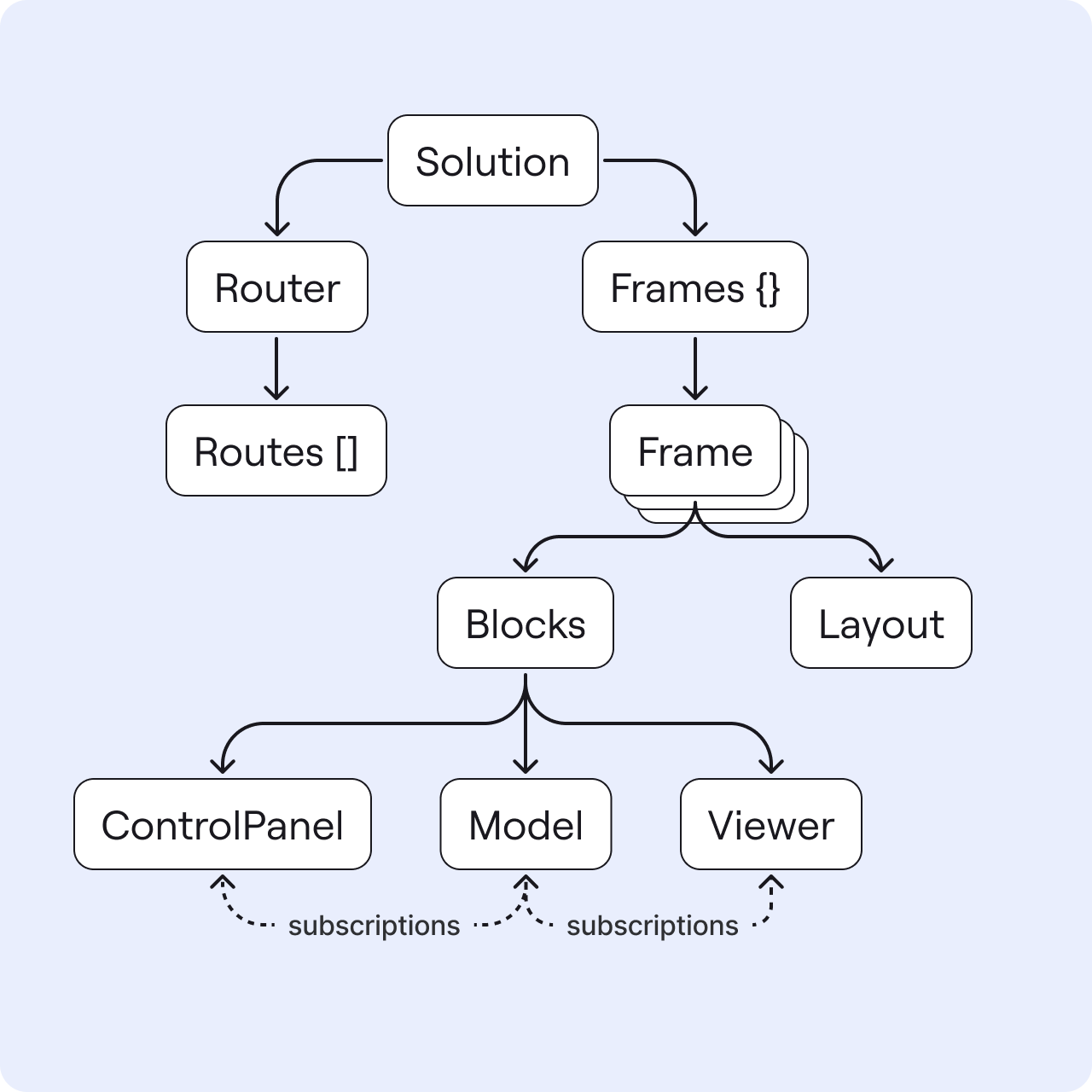Configuring solutions
Explanation on solutions.
Solution is a web application on the Packhunt platform. You can create multiple solutions within any organisation which you have at least the Adminrole.
To create a web-application, a solution should be configured. The solution is composed of frame(s) and a router.
Routerdefines the hierarchy of frames.Framesare pages or sub-pages of your web app (containers for the blocks).Blocksare functional elements that have a specific role in the solution (e.g. Viewer block)Layoutdefines where to show which blocks and sizes in the user interface.Subscriptionsallow blocks to communicate with one another.
💡A web application can contain a single frame or multiple frames. For some web applications, frames are embedded within one another creating a more complex hierarchical structure.
